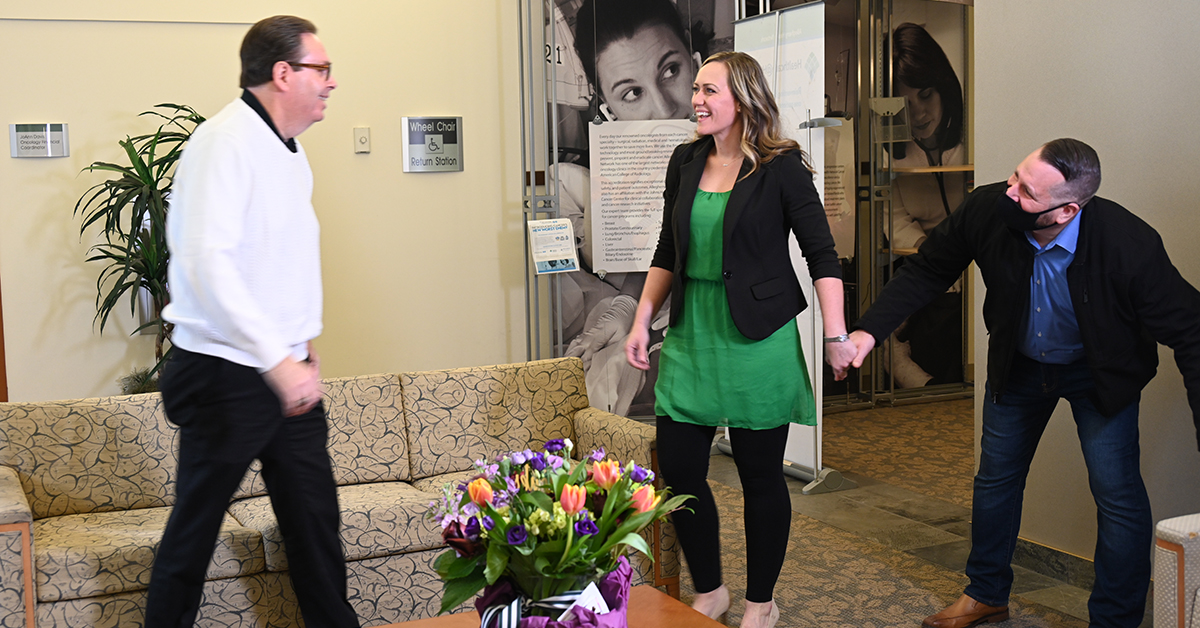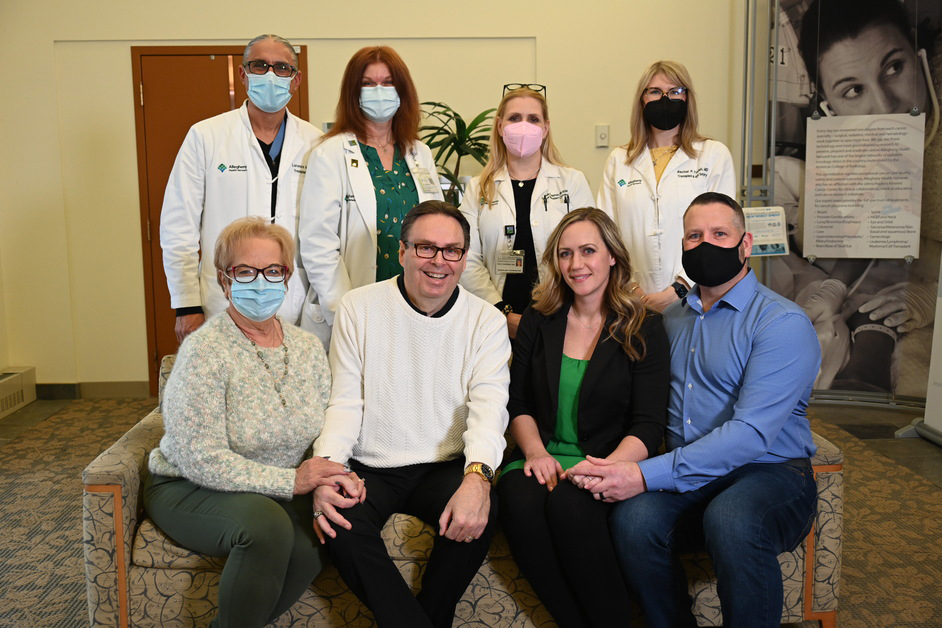
“If someone needed something I had two of, why not do it? It was a minimal harm to me and huge benefit to them,” said Erin Prindle.
Kurt DeHaven, CRNP, usually finds himself on the care giving side in the thoracic surgery department at Allegheny General Hospital (AGH). But in February 2020, things took a turn, landing him in the emergency department with kidney stones. Soon after, his kidney function began to decline, and he was left with limited options — dialysis until a kidney would become available for transplant.
Kidneys are the most-needed organ for transplants in the U.S., with about 90,000 people on the kidney transplant waitlist nationwide. Living kidney donation provides patients with an option that may expedite their access to a life-saving transplant much sooner than waiting for a deceased-donor kidney match to become available. Living donation makes up about a third of kidney transplants, according to organ procurement organization, CORE.
“Living donation is the best kidney a patient can get because it comes from a healthy donor,” said Rachel Tindall, MD, abdominal transplant surgeon. “Living donation is life changing; it gives the recipient freedom from a debilitating chronic disease and eliminates the need for dialysis.”
Most living kidney donors are connected to the recipient in some way, such as a friend, family, or community member. Many give through direct or paired donation, and even fewer living donors give altruistically.

(from left, front) Carol DeHaven, Kurt DeHaven (recipient), Erin Prindle (donor), Jason Prindle; (from left, back) the Allegheny Health Network transplant team of Dr. Lorenzo Machado, Gail Ann McKee, Holly Chapman and Dr. Rachel Tindall
Erin Prindle belongs to a very small club: People who choose to be living kidney donors and give a kidney to an anonymous recipient.
Erin first became interested in kidney donation about a year ago when a coworker’s spouse needed a transplant. As a runner, Erin wanted to donate and still compete in activities she enjoys like ultra-marathons and half Ironman Triathlons. Through research, speaking with other athletes and advisement from her Allegheny Health Network (AHN) care team, she discovered she could return to these demanding competitions post-recovery. Knowing that, Erin felt compelled to move forward with donation.Erin immediately began testing to see her viability as a living donor. While she was an initial medical match, her coworker’s wife had developed some antibodies against Erin’s blood.
Still committed to living donation, Erin learned about an innovative approach called the paired match exchange program. This involves two living donors and two recipients. If the donor from one pair is compatible with the recipient of the other pair, a transplant center can arrange a “swap” for two simultaneous transplants to take place. This enables both transplant candidates to receive organ donations, even though the original recipient/donor pairs were unable to do so with each other.
Eager to help, Erin registered for the paired match exchange program. But, in July, her planned recipient was able to get a deceased organ donor and was no longer in need of Erin’s donation.
Knowing the life-changing impact of a new kidney for someone on the waitlist, Erin began looking at altruistic donation.
“I’d gone through all the testing. If someone needed something I had two of, why not do it? It was a minimal harm to me and huge benefit to them,” she said.
Erin and Kurt had their donation and transplant surgery on Dec. 17, 2021, at Allegheny General Hospital. About a month later, the pair had the opportunity to be united for the first time alongside their families and care team.
See their story and the life changing impact of organ donation in the video below, and then visit OrganDonor.gov to learn more about living organ donation.
Dr. Rachel Tindall: An altruistic donor is somebody who is donating basically out of the goodness of their heart. That they feel compelled to donate an organ to someone they don’t know and don’t have a relationship with prior.
Kurt DeHaven: After being on the transplant list for over a year, not knowing when it was going to happen if it was ever going to happen.
Erin Prindle: I am a mom of two teenagers, a wife of 20 years. I’ve always had a kind of interest in organ donation since I learned there could be a living donor. I had this healthy body, and I didn’t need two kidneys so why not, why would I not go through? And I found out a year ago that a coworker of mine, his wife was in need of a kidney transplant. So, I raised my hand and I said ‘let me test and see.’ And we were a match up until the final clinic day. I knew that I had already gone through all of this testing. It makes sense to do, and I think anyone who is in a position to help someone else out. Research it, reach out, talk to your local transplant center, and ask questions.
Dr. Rachel Tindall: We tell everyone average wait time here is 4-5 years. It can be longer depending on someone’s certain situation. It’s life changing— it really gives people their whole life back.
Kurt DeHaven: It means a lot just to have a normal life now. Erin has given us a great gift that could never expect from anyone. I know it’s difficult. I’m hoping from this we will remain friends for the rest of our lives.
Erin Prindle: I’m just very grateful to be able to meet him and to see the positive impacts it’s had on his life to this date, and hopefully they continue to grow as he heals.